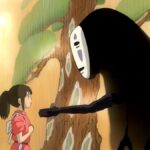All Posts: Page 6
February 4, 2024 · 0 comments
Ascendance of a Bookworm
By Andrew Osmond. Like many fantasy protagonists, the young heroine of Ascendance of a Bookworm is on a desperate mission. But it doesn’t involve melting a ring, slaying a dragon, or facing an invading army. No, her mission is suggested by the title; it’s to read a book in a world where books are as […]
February 1, 2024 · 0 comments
Shirobako
By Andrew Osmond. Shirobako opens… misleadingly, actually. Its first minutes show an animation high-school club where five close-knit girls are making their own anime mini-epic. Once that’s been done, they promise each other, they’ll join up again to make something else. And then… the story skips forward two and a half years. Two of the […]
January 29, 2024 · 0 comments
Blue Giant: Yuzuru Tachikawa Interview
By Andrew Osmond. The film Blue Giant opens in UK cinemas this Wednesday. It’s a music drama about the fortunes of three teen boys in Tokyo – sax player prodigy Dai, haughty pianist Yukinori, and greenhorn drummer Tamada – trying to make it as a jazz trio. You can read more about Blue Giant’s story […]
January 26, 2024 · 0 comments
Books: I Could Never be a Succubus
By Shelley Pallis. The story of I Could Never be a Succubus begins with a striking Gotterdammerung, as a bold hero and an evil demon lord fight for their lives in a burning castle. But this is not one-on-one, the hero is the leader of a stereotypical party of adventurers, and the adversary soon realises […]
January 23, 2024 · 0 comments
Lonely Castle in the Mirror
By Shelley Pallis. Kokoro (Ami Touma) has a name that means “heart”, but feels that hers is constantly being stamped on. Mean girls at school make her life so difficult, that eventually she gives up altogether, and stays home with an alleged stomach-ache. Lying on her bed and feeling sorry for herself, she discovers that […]
January 20, 2024 · 0 comments
Books: Ghibli and Grief
By Zoe Crombie. As one of, if not the, most popular anime studio in the world, Studio Ghibli has attracted attention from academics, authors, and journalists globally – most recently, the book Now Go: Grief and Studio Ghibli explores the studio in a fresh and highly individual way. Relating much of Ghibli’s oeuvre to personal […]





